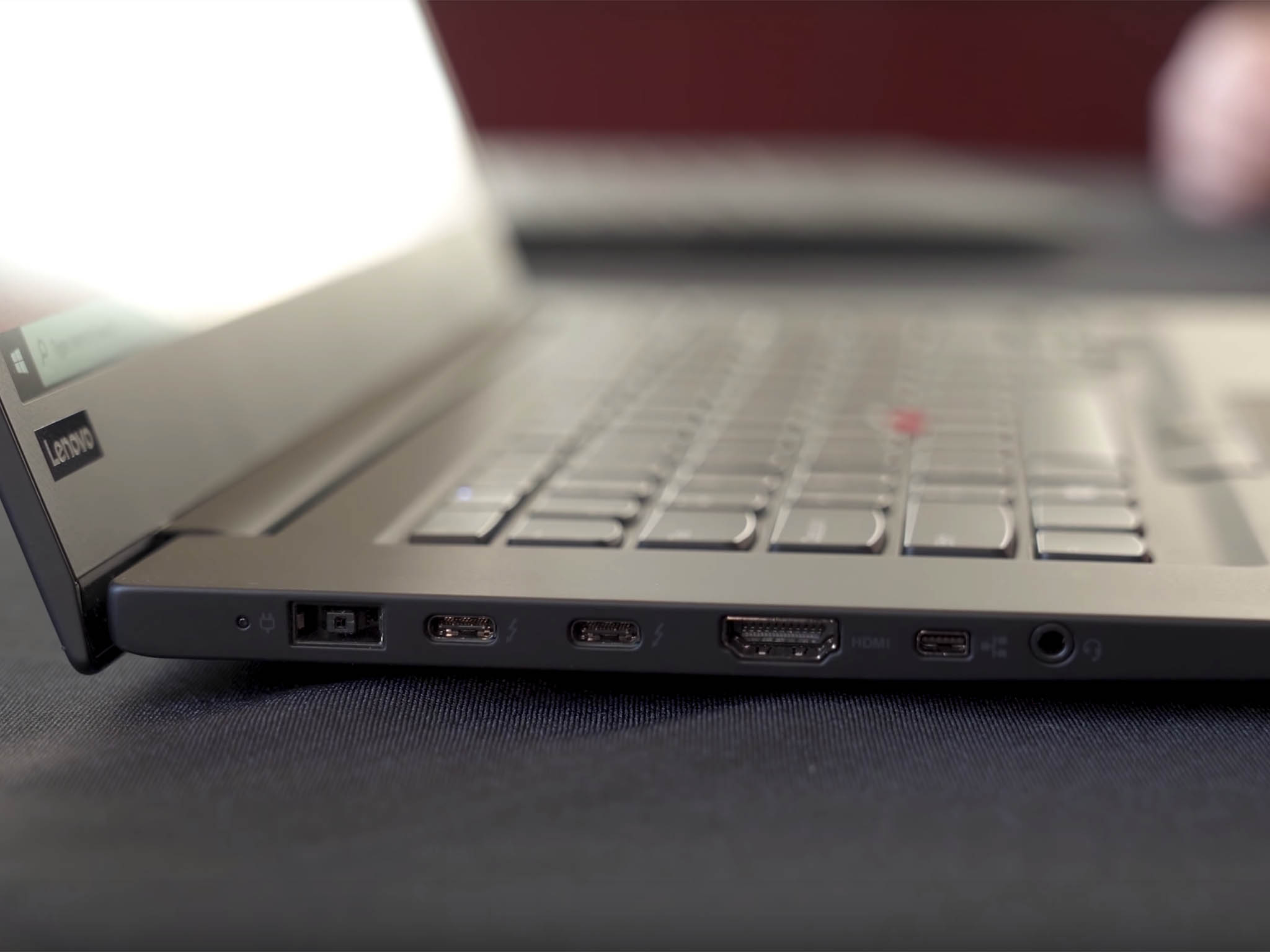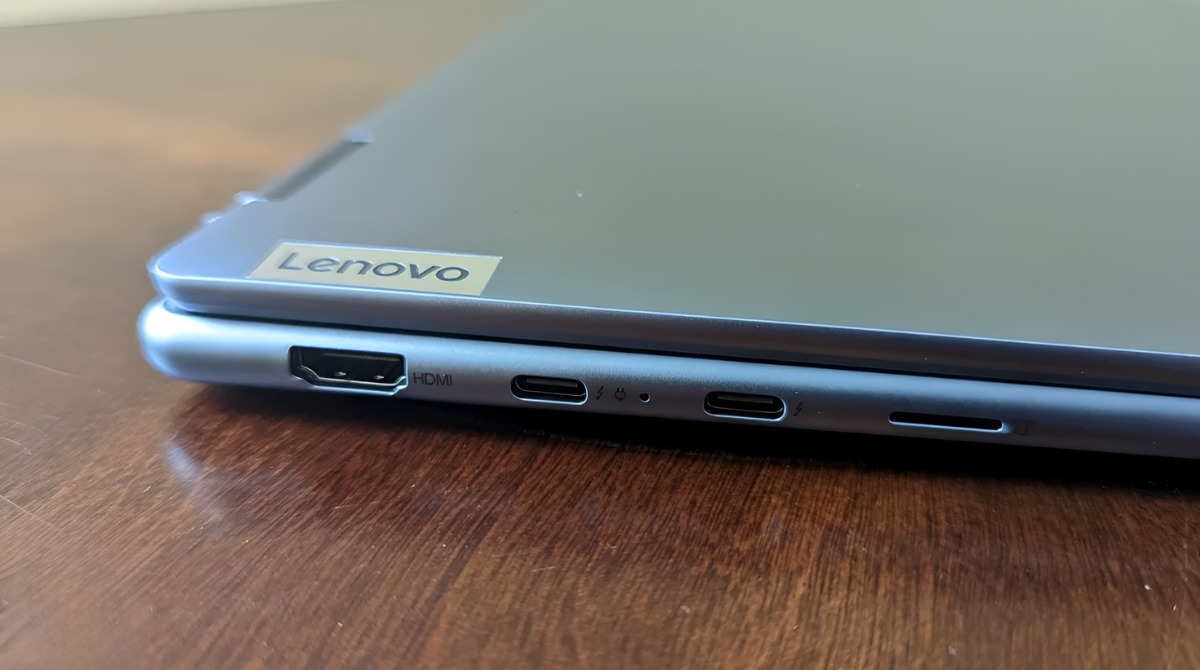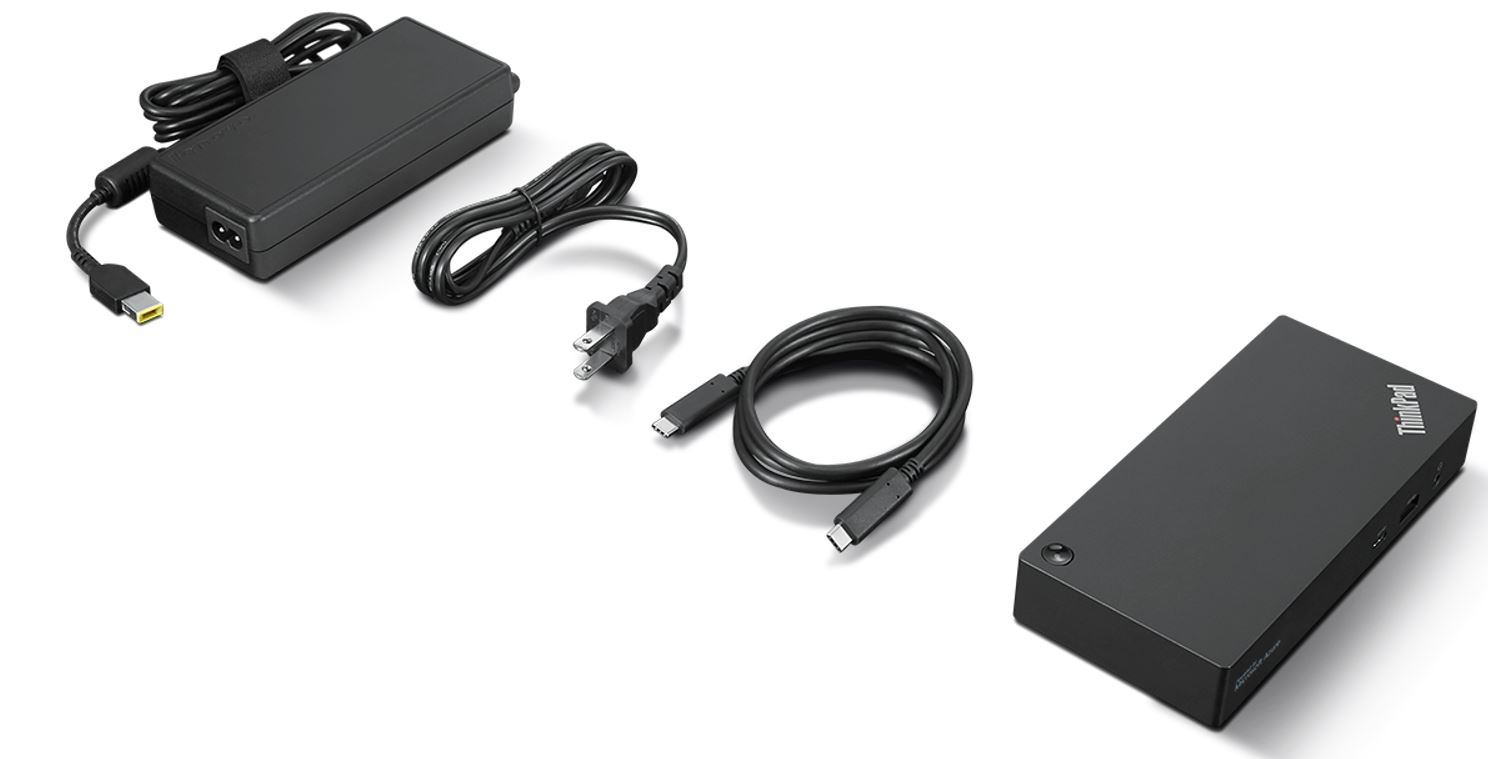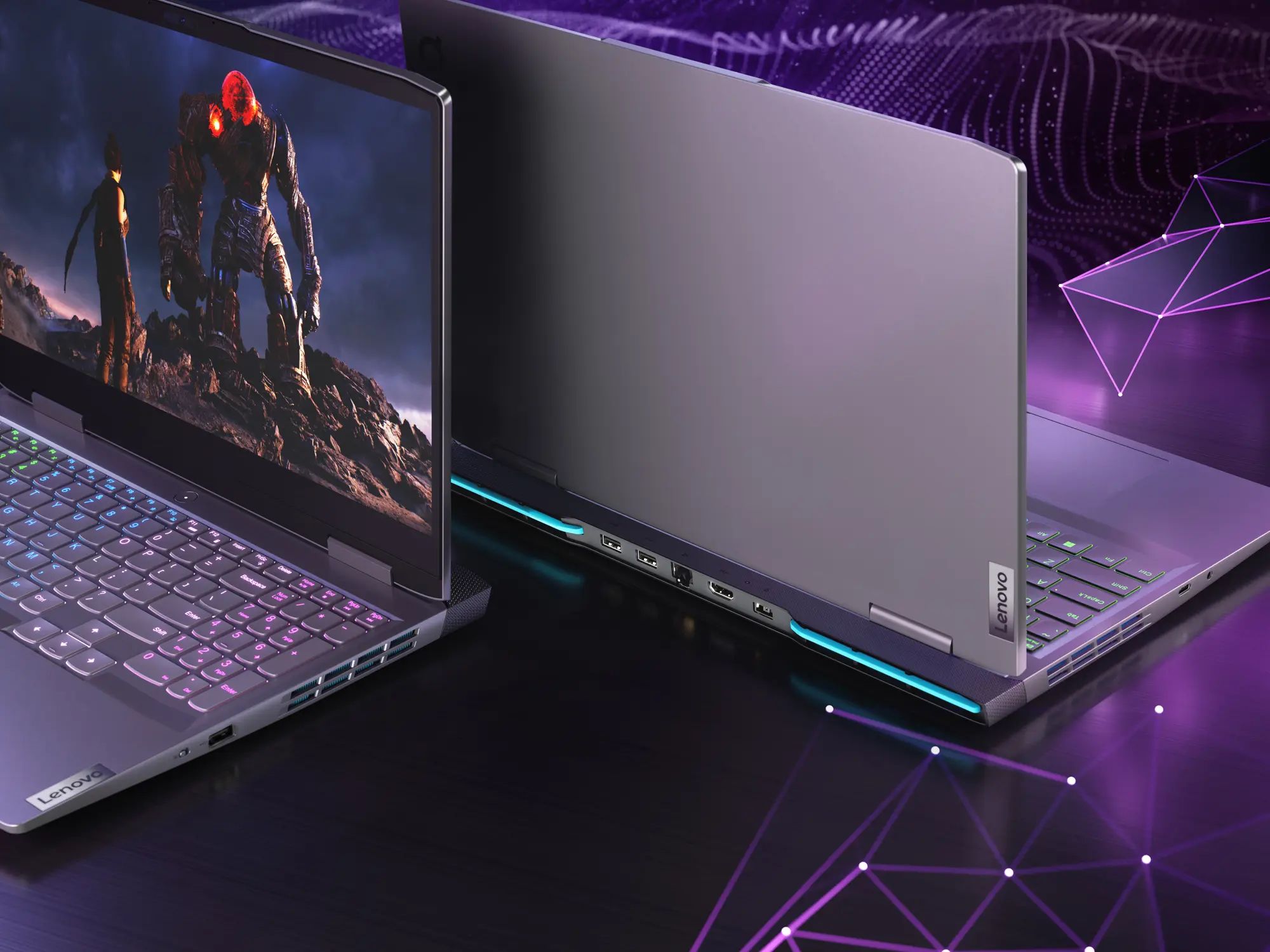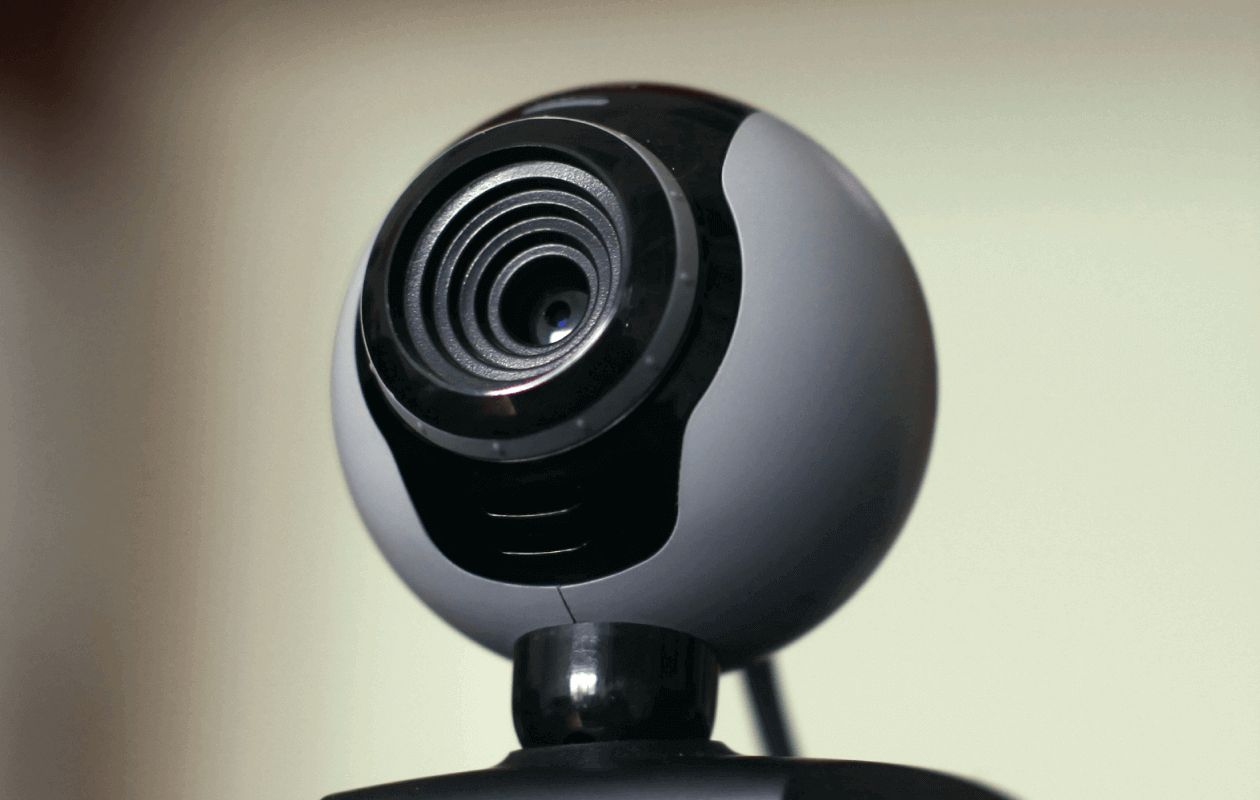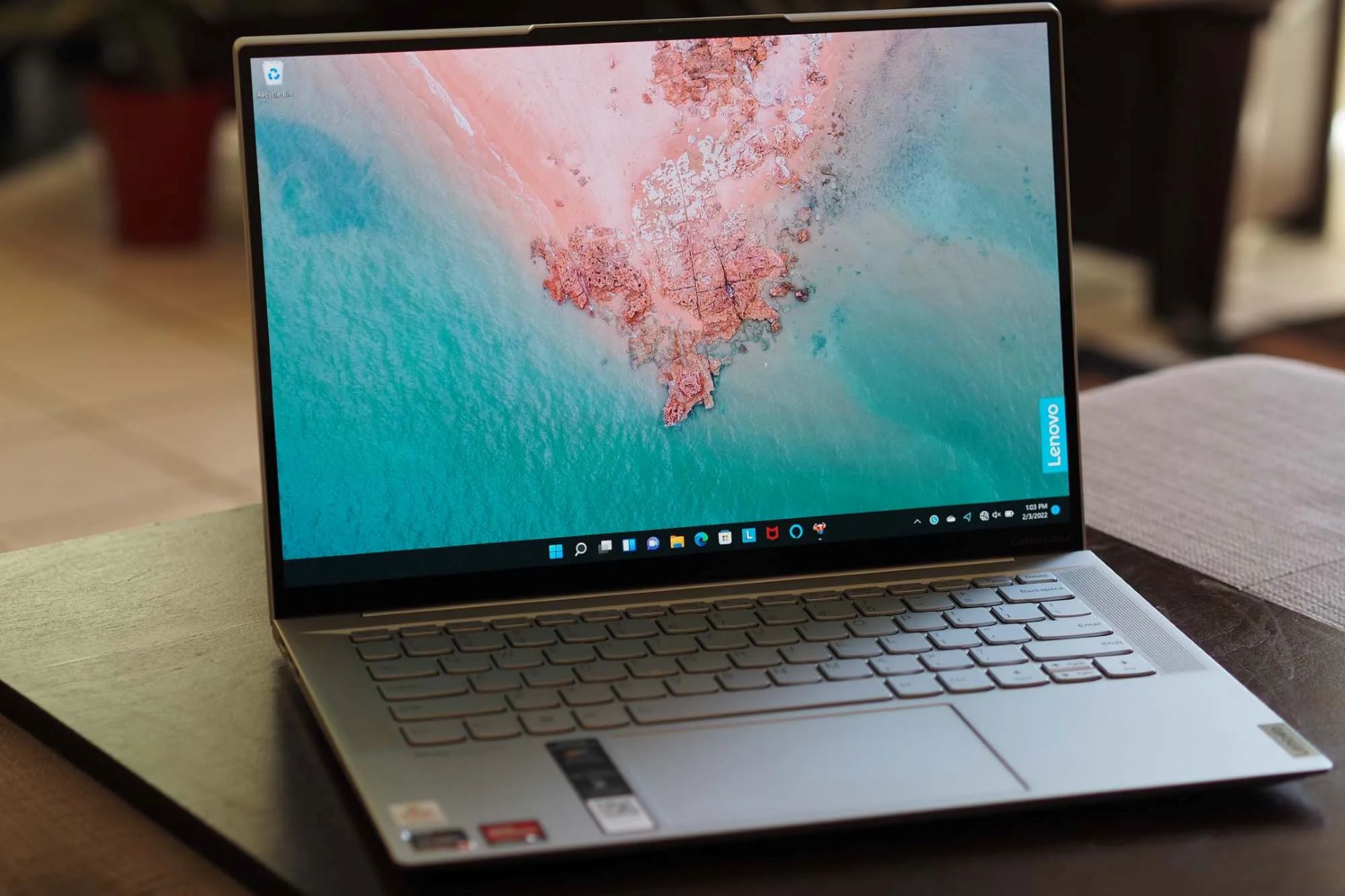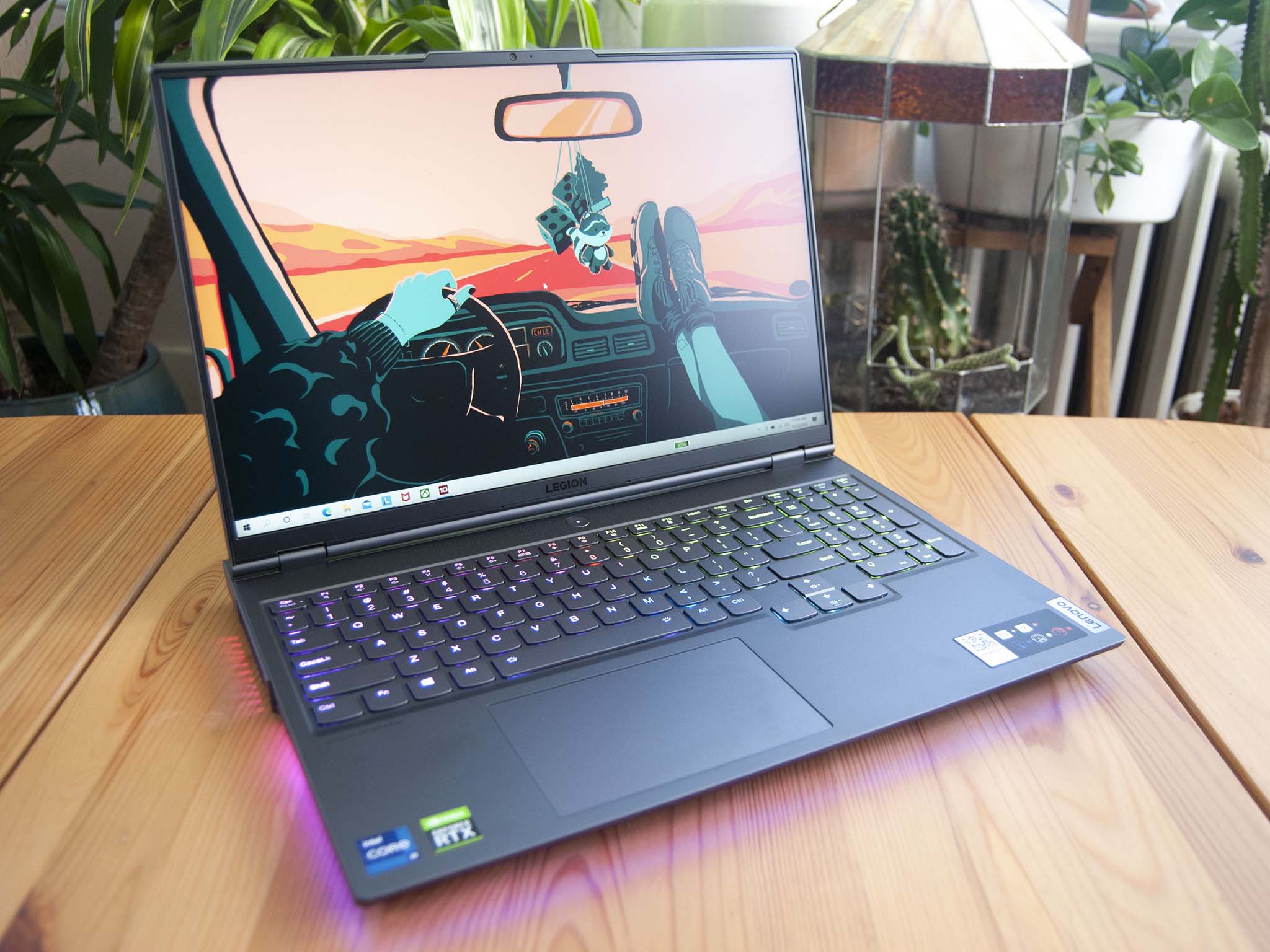Introduction
Welcome to this guide on how to use HDMI on your Lenovo laptop. HDMI (High-Definition Multimedia Interface) is a widely used audio/video interface that allows you to connect your laptop to external displays such as monitors, projectors, or TVs. By using HDMI, you can enjoy high-definition videos, play games, or give presentations on a larger screen with better clarity and detail.
Lenovo laptops are known for their reliability and performance, and many of them come equipped with HDMI ports. If you are unsure whether your Lenovo laptop has an HDMI port, or if you are new to using HDMI, don’t worry! This guide will provide step-by-step instructions on how to check for HDMI ports on your Lenovo laptop, connect it to an external display using HDMI, adjust display settings, and troubleshoot common issues related to HDMI connectivity.
Whether you are a student, professional, or casual user, understanding how to utilize HDMI on your Lenovo laptop can greatly enhance your multimedia experience. Whether you want to watch movies, give a presentation, or extend your desktop workspace, HDMI offers a convenient and high-quality solution.
In the following sections, we will walk you through the process of using HDMI on your Lenovo laptop, starting with how to check for HDMI ports. So, let’s get started and explore the world of HDMI connectivity on your Lenovo laptop!
What is HDMI?
HDMI, which stands for High-Definition Multimedia Interface, is a digital audio/video interface that allows for the transmission of high-quality uncompressed audio and video signals. It has become the standard connection for transferring high-definition content from devices such as laptops, gaming consoles, Blu-ray players, and set-top boxes to external displays like monitors, projectors, or TVs.
One of the biggest advantages of using HDMI is its ability to transmit both audio and video signals through a single cable, eliminating the need for multiple cables and connections. This simplifies the setup process and provides a cleaner and more organized appearance.
HDMI supports various video resolutions, including standard definition (480i and 480p), high definition (720p and 1080p), and even ultra-high definition (4K and 8K) resolutions. This versatility makes it suitable for a wide range of applications, from watching movies and playing games to delivering professional presentations.
Another important feature of HDMI is its support for HDCP (High-bandwidth Digital Content Protection). HDCP ensures secure transmission of copyrighted content between devices, preventing unauthorized copying or distribution of digital media.
Over the years, HDMI has undergone several updates and versions, with each new version offering improved features and capabilities. The most recent version, HDMI 2.1, introduced support for higher video resolutions, increased bandwidth, enhanced audio formats, and improved gaming features like Variable Refresh Rate (VRR) and Auto Low Latency Mode (ALLM).
When it comes to Lenovo laptops, many models come equipped with one or more HDMI ports, making it easy to connect and enjoy content on external displays with just a cable. However, it is essential to check your laptop’s specifications or user manual to confirm the availability of HDMI ports and learn about any specific requirements or limitations.
In the next section, we will explore how to check for HDMI ports on your Lenovo laptop, ensuring that you have the necessary hardware to enjoy the benefits of HDMI connectivity.
Checking for HDMI Ports on Your Lenovo Laptop
Before you can start using HDMI on your Lenovo laptop, it is important to confirm whether or not your laptop has an HDMI port. Most Lenovo laptops come equipped with at least one HDMI port, but it is always a good idea to double-check.
To determine if your Lenovo laptop has an HDMI port, follow these simple steps:
- Start by locating the sides or edges of your laptop. Look for any rectangular-shaped ports or openings.
- Check if there is an HDMI symbol beside one of the ports. The HDMI symbol consists of the letters “HDMI” followed by the word “IN” or “OUT,” indicating whether it is an input or output port.
- In some cases, the HDMI port may also be labeled with a small icon resembling a square with two lines on either side.
- If you still cannot locate the HDMI port, consult your laptop’s user manual or visit the Lenovo support website to find specifications for your specific model.
Once you have confirmed the presence and location of the HDMI port on your Lenovo laptop, you can proceed to the next step, which is connecting your laptop to an external display using an HDMI cable.
Note that some Lenovo laptops may have different types of HDMI ports, such as HDMI 1.4 or HDMI 2.0, which support different features and resolutions. It is advisable to consult your laptop’s user manual or the manufacturer’s website to understand the capabilities and limitations of your specific HDMI port.
Now that you have successfully identified the HDMI port on your Lenovo laptop, we can move on to the next section, where we will discuss how to connect your laptop to an external display using HDMI.
Connecting Your Lenovo Laptop to a Monitor or TV Using HDMI
Connecting your Lenovo laptop to a monitor or TV using HDMI is a straightforward process. By following these steps, you will be able to enjoy your laptop’s content on a bigger screen:
- Start by checking the HDMI port on your laptop and the HDMI port on the monitor or TV. Make sure both devices are turned off before connecting the HDMI cable.
- Take one end of the HDMI cable and insert it into the HDMI port on your laptop. The HDMI port may be labeled “HDMI IN” or “HDMI OUT,” depending on its purpose.
- Now, take the other end of the HDMI cable and insert it into the HDMI port on the monitor or TV. Again, the HDMI port on the display may be labeled accordingly.
- Once the HDMI cable is securely connected to both devices, you can turn them on.
- Use the remote control or buttons on the monitor or TV to select the correct HDMI input source. If you are connecting to a monitor with multiple HDMI inputs, ensure that you choose the one connected to your Lenovo laptop.
- On your Lenovo laptop, press the Windows key + P to open the Projection settings. This will allow you to choose how the display is extended or duplicated between your laptop and the external monitor or TV.
- Select the desired display mode, such as “Duplicate” to mirror your laptop’s screen on the external display, or “Extend” to use the external display as an extended desktop.
- Once you have chosen the display mode, the content from your laptop should now be displayed on the monitor or TV connected through HDMI.
If you encounter any issues with the HDMI connection, refer to the troubleshooting section later in this guide for helpful tips and solutions.
Now that you have successfully connected your Lenovo laptop to a monitor or TV using HDMI, it’s time to adjust the display settings according to your preferences. The next section will guide you through the process of adjusting the display settings on your Lenovo laptop.
Adjusting the Display Settings on Your Lenovo Laptop
After connecting your Lenovo laptop to an external monitor or TV using HDMI, you may need to adjust the display settings to ensure optimal viewing experience. Here are some essential steps to help you adjust the display settings on your Lenovo laptop:
- Right-click anywhere on your laptop’s desktop to open the context menu.
- Select “Display settings” to open the display settings menu.
- In the display settings menu, you will see options to adjust the resolution, orientation, and scaling of your laptop’s display.
- If your laptop is using multiple displays, you will also see a preview of each display along with options to rearrange them.
- To adjust the resolution, click on the drop-down menu under “Display resolution” and select the desired resolution for your external monitor or TV.
- If the display appears blurry or not properly aligned, you can use the “Orientation” dropdown to rotate the display or the “Scale and layout” option to adjust the size of text, apps, and other items.
- Depending on your graphics card and drivers, you may have additional settings available, such as color calibration, refresh rate, or advanced display options. Explore these settings to fine-tune your display’s performance.
- Make the necessary adjustments and click “Apply” to save the changes.
- Test the display on your external monitor or TV to ensure that the settings are to your liking. If needed, you can go back and make further adjustments.
By adjusting the display settings on your Lenovo laptop, you can optimize the visuals and ensure that they match your preferences and the capabilities of your external monitor or TV.
Remember, the steps to adjust display settings may vary based on your laptop’s model, operating system, and graphics card. If you are unable to find the display settings or encounter any difficulties, refer to your laptop’s user manual or the Lenovo support website for specific instructions.
In the next section, we will address common HDMI issues and provide troubleshooting tips to help you resolve any connectivity or display problems you may encounter.
Troubleshooting Common HDMI Issues
Using HDMI on your Lenovo laptop can sometimes come with its own set of challenges. However, many common HDMI issues can be resolved with a few troubleshooting steps. Here are some common HDMI issues and their possible solutions:
No Display on External Monitor or TV:
- Ensure that the HDMI cable is securely connected to both your laptop and the external display.
- Try using a different HDMI cable to rule out any cable-related issues.
- Check if the HDMI port on your laptop or the external display is damaged or faulty.
- Press the Windows key + P on your laptop to open the Projection settings and make sure the proper display mode (e.g., Duplicate, Extend) is selected.
- Restart your laptop and the external display to refresh the connection.
Poor Quality or Flickering Display:
- Ensure that you have selected the appropriate display resolution and refresh rate for the external monitor or TV.
- Update your graphics card drivers to the latest version, as outdated drivers can cause display issues.
- Try adjusting the display settings on your laptop, such as brightness, contrast, or color calibration.
- Check the HDMI cable for any visible damage or try using a different cable to rule out any cable-related issues.
- Ensure that the HDMI port on your laptop and the external display are clean and free of dust or debris.
No Sound on External Display:
- Check if the volume is muted on your laptop or the external display.
- Open the volume mixer on your laptop and make sure that the correct sound output device is selected.
- Update your audio drivers to the latest version, as outdated drivers can cause audio-related issues.
- Try connecting the HDMI cable to a different HDMI port on the external display, as some displays have multiple HDMI inputs.
- Test the audio by connecting headphones or external speakers directly to your laptop’s audio output jack.
If the above troubleshooting steps do not resolve your HDMI issues, it is recommended to consult Lenovo’s support documentation or reach out to their customer support for further assistance.
With these troubleshooting tips, you should be able to overcome common HDMI issues and enjoy a seamless and immersive multimedia experience with your Lenovo laptop and the connected external monitor or TV.
In the next section, we will conclude this guide with a summary of the key points discussed throughout the article.
Conclusion
Using HDMI on your Lenovo laptop can greatly enhance your multimedia experience by allowing you to connect to external displays such as monitors or TVs. In this guide, we have discussed the basics of HDMI, how to check for HDMI ports on your Lenovo laptop, and the step-by-step process of connecting your laptop to an external display using HDMI.
We have also covered adjusting the display settings to optimize the visuals on your external monitor or TV and troubleshooting common HDMI issues that you may encounter. By following the instructions outlined in this guide, you should be able to make the most of your Lenovo laptop’s HDMI capabilities and enjoy high-quality audio and video content on a larger screen.
Remember to always ensure that your HDMI cable is securely connected and in good condition, and that both your laptop and external display are powered on before attempting to establish a connection. Additionally, it is important to check and update your graphics card and audio drivers to maximize compatibility and resolve any potential display or sound-related issues.
If you are still experiencing difficulties or have specific inquiries about your Lenovo laptop’s HDMI functionality, it is advised to consult the manufacturer’s support documentation or contact their customer support for further assistance.
Now that you are equipped with the knowledge of how to use HDMI on your Lenovo laptop, you can enjoy a more immersive and versatile computing experience. Whether you are watching movies, playing games, or delivering presentations, connecting your laptop to an external display using HDMI will elevate your multimedia capabilities and provide a more engaging visual experience.







